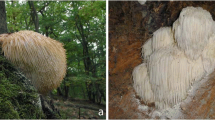Abstract
Prolyl endopeptidase (PEP, EC 3.4.21.26), a serine protease, is widely distributed in various organs, particularly in the brains of Alzheimer’s disease patients. The expression of PEP in Alzheimer’s patients has been found to be significantly higher than that of the normal person, suggesting that a specific PEP inhibitor can be a good candidate for an anti-amnestic drug. In the current study, thirty-nine plant phenolics were investigated to determine their roles as prolyl endopeptidase (PEP) inhibitors. Nineteen compounds such as 1,2,3-trigalloyl glucopyranoside, 1,2,6-trigalloyl glucopyranoside, 1,2,3,4,6-pentagalloyl gluco-pyranoside, 1,2,6-trigalloyl alloside, 1,3,6-trigalloyl alloside, 1,2,3,6-tetragalloyl alloside, acetonyl geraniin, corilagin, elaeocarpusin, euphorscopin, geraniin, helioscopin B, helioscopinin A, helioscopinin B, jolkinin, macranganin, rugosin E, supinanin, and teracatain exhibited strong inhibition against PEP (IC50 26.7 - 443.7x10-9 M). Rugosin E (IC50 26.7x10-9 M) showed the most effective inhibition followed by 1,2,6-trigalloyl glucopyranoside (IC5031.4x10-9 M) and macranganin (IC50 42.6x10-9 M). No significant structure-activity relationship was found; however, at least, three pyrogallol groups seem to be a minimal requirement for stronger activity against PEP. All 19 active compounds inhibited PEP in a non-competitive mode with a substrate in Dixon plots. They did not show significant effects against other serine proteases such as trypsin, chymotrypsin and elastase, indicating that they were relatively specific PEP inhibitors.
Similar content being viewed by others
References
Arai, H., Nishioka, H., Niwa, S., Yamanaka, T., Tanaka, Y, Yoshinaga, K., Kobayashi, N., Miura, N., and Ikeda, Y, Synthesis of prolyl endopeptidase inhibitors and evaluation of their structure-activity relationships: In vitro inhibition of prolyl endopeptidase from canine brain.Chem. Pharm. Bull., 41, 1583–1588(1993).
Bakker, A., Jung, S., Spencer, R., Vinick, R, and Farad, W., Slow tight-binding inhibition of prolyl endopeptidase by benzyloxycarbonyl-prolyl-prolinal.J. Biochem., 271, 559–562 (1990).
Behl, C, Davis, J., Lesley, R., and Schubert, D., Hydrogen peroxide mediates amyloid beta protein toxicity.Cell, 77, 817–827(1994).
Cunningham, D., and O’Conor, B., Proline specific peptidase.Biochim. Biophys. Acta., 1343,160–186(1997).
Fan, W., Tezuka, Y, Komatsu, K., Namaba, T., and Kadota, S., Prolyl endopeptidase inhibitors from the underground part ofRhodiola sacra.Biol. Pharm. Bull., 22,157–161 (1999).
Fan, W., Tezuka, Y, Ni, K. M., and Kadota, S., Prolyl endopeptidase inhibitors from the underground part ofRhodiola sachalinensis.Chem. Pharm. Bull., 49, 396–401 (2001).
Fan, W., Tezuka, Y, and Kadota, S., Prolyl endopeptidase inhibitory activity of fourteen Kampo formulas and inhibitory constituents of Tokaku-joki-to.Chem. Pharm. Bull., 48, 1055–1061 (2000).
Floyd, R., and Hensley, K., Oxidative stress in brain aging. Implications for therapeutics of neurodegenerative diseases.Neurobiol. Aging, 23, 795–807 (2002).
Kim, S.-I., and Song, K. -S., 1,2,3,4,6-Pentagalloyl-β-D-gluco-pyranose, a prolyl endopeptidase inhibitor from Moutan Cortex.J. Korean Soc. Agric. Chem. Biotechnol., 43, 158–161 (2000).
Kimura, K., Kawaguchi, N., Yoshihama, M., Kawanishi, A. Staurosporine, a prolyl endopeptidase inhibitor.Agric. Biol. Chem., 54, 3021–3022 (1990).
Lee, J. -H., Lee, S. -Y, Lee, K. -S., Jang, H. -J., Lee, K. -H., Hahn, T. -R., Paik, and Y. -S., Prolyl endopeptidase inhibitors from the leaves ofGinko biloba.Planta Med., 70, 1228–1230 (2004).
Lee, K. -H., Kwak, J. -H., Lee, B. -K., and Song, K. -S., Prolyl endopeptidase inhibitors from Caryophylli Flos.Arch. Pharm. Res., 21, 207–211 (1998).
Lee, S.-H.,Chemical study on tannins and related compounds isolated from seven Euphorbiaceae plants,Ph. D. Thesis of Kyushu University, Japan (1991).
Mingshu, L., Kai, Y, Qiang, H., and Dongyang, J., BiodegrActation of gallotannins and ellagitannins.J. Basic Microbiol., 46, 68–84 (2006).
Miranda, S., Opazo, C, Larrondo, L. R, Munoz, F. J., Ruiz, R, Leighton, R, and Inestrosa, N. C, The role of oxidative stress in the toxicity induced by amyloid b-peptide in Alzheimer’s disease.Prog. Neurobiol., 62, 633–648 (2000).
Perry, G, Cash, A. D., and Smith, M. A., Alzheimer disease and oxidative stress.J. Biomed. Biotechnol., 2,120–123 (2002).
Portevin, B., Benoista, A., Remond, G, Herve, Y., Vincent, M., Lepagnol, J., and De Nanteul G, New prolyl endopeptidase inhibitors:in vitro andin vivo activities of azabicyclo [2.2.2]octane, azabicyclo[2.2.1]heptane, and perhydroindole derivatives.J. Med. Chem., 39, 2379–2391 (1996).
Selkoe, D. J., Alzheimer’s disease: a central role for amyloid.J. Neuropathol. Exp. Neurol., 53,438–447 (1994).
Song, K.-S., and Raskin, I., A prolyl endopeptidase-inhibiting benzofuran dimer fromPolyozellus multiflex.J. Nat. Prod., 65, 76–78 (2002).
Sroka Z., Antioxidant and antiradical properties of plant phenolics.Z Naturforsch [C], 60, 833–843 (2005).
Sultanova, N., Makhmoor, T, Yasin, A., Abilov, Z. A., Omurkamzinova, V. B., and Choudhary, M. I., A new antioxidant and prolyl endopeptidase-inhibiting triterpenoid fromTamarix hispida.Planta Med., 70, 65–67 (2004).
Toide, K., Okamiya, K., Iwamoto, Y, Kato, T., Toide, K., Okamiya, K., Iwamoto, Y and Kato, T, Effect of a novel prolyl Endopeptidase inhibitor, JTP-4819, on prolyl endopeptidase activity and substance P- and arginine-vasopressin-like immunoreactivity in the brains of aged rats.J. Neurochem., 65,234–240(1995).
Welches, W. R., Brosnihan, K. B., and Rerrario, C. M., A comparison of the properties and enzymatic activities of three angiotensin processing enzymes: angiotensin converting enzyme, prolyl endopeptidase and neutral endopeptidase.Life Sci., 52, 1461–1480 (1993).
Williams, R. S. B., Eames, M., Ryves, W., Viggars, J., and Harwood, A. J., Loss of a prolyl oligopeptidase confers resistance to lithium by elevation of inositol (1,4,5) triphosphate.EMBOJ., 18, 2734–2745 (1999).
Yoshimoto, T, Kado, K., Matsubara, R, Koriyama, N., Kaneto, H., and Tsuru, D. J., Specific inhibitors for prolyl endopeptidase and their anti-amnesic effect.J. Pharmacobio-Dyn., 10, 730–735(1987).
Author information
Authors and Affiliations
Corresponding author
Rights and permissions
About this article
Cite this article
Lee, S.H., Jun, M., Choi, J.Y. et al. Plant phenolics as prolyl endopeptidase inhibitors. Arch Pharm Res 30, 827–833 (2007). https://doi.org/10.1007/BF02978832
Received:
Issue Date:
DOI: https://doi.org/10.1007/BF02978832




